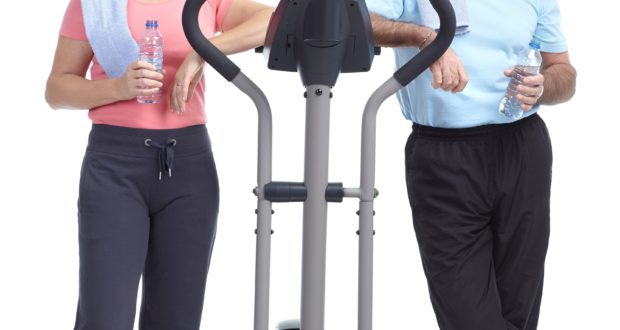Many adults find it highly difficult to lose weight once they enter middle age. This observation is actually backed up by scientific evidence – both men and women burn off significantly fewer calories in their fifties than in their younger years. Despite this roadblock, those over fifty can still take steps to shed extra weight.
Eating Smart
It’s commonplace for people to eat three sizable meals each day. While this might have worked in your twenties, the body’s changing metabolism often necessitates a new approach. Instead, a good alternative could be to eat five or six smaller meals that emphasize healthy fare. Some options include oats, sprouts, soups, low fat yogurts and whole grain salads.
On the flip side of the coin, there are numerous foods that older adults are best served avoiding, such as sodas, sugary baked goods and fried offerings. Items high in refined grains, sodium or saturated fat should likewise be on the chopping block. It could also be helpful to limit your intake of both alcoholic beverages and caffeine-fueled drinks.
Getting in Shape
According to the Centers for Disease Control and Prevention (CDC), older adults should regularly engage in both strength training and aerobic activities. Specifically, the CDC urges those in this demographic to follow one of two exercise regimens:
- 150 weekly minutes moderate-intensity aerobic exercise, combined with muscle- strengthening activities. These muscle building activities should be performed on two days or more during the week, and should tax all of the body’s major muscle groups.
- 75 minutes of vigorous-intensity aerobic activity. This aerobic exercise should be accompanied with strength-training activities, again performed two days per week and working all key muscle groups.
You may be wondering what qualifies as “moderate-intensity” and “vigorous-intensity” exercise. Fortunately, the World Health Organization has created the following chart identifying activities in both categories:
| Moderate-intensity Activities | Vigorous-Intensity Activities |
| Brisk Walking | Running |
| Dancing | Walking/climbing briskly up a hill |
| Gardening | Fast cycling |
| Housework/Domestic Chores | Aerobics |
| Traditional Hunting/Gathering | Fast swimming |
| Active involvement in games and sports with children, or walking with domestic animals | Competitive sports, such as football, volleyball, hockey and basketball |
| General building tasks, such as roofing and painting | Heavy shoveling or digging trenches |
| Carrying and moving moderate loads | Carrying and moving heavy loads |
 Natural Knowledge 24/7 Educate yourself with nutrition, health and fitness knowledge.
Natural Knowledge 24/7 Educate yourself with nutrition, health and fitness knowledge.






